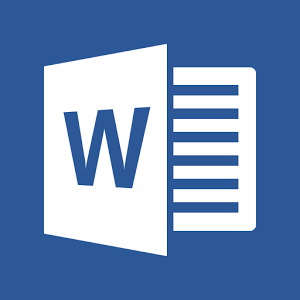PENGARUH VARIABEL HIJAU TERHADAP BISNIS YANG BERKELANJUTAN: STUDI SEKTOR KULINER DESTINASI WISATA JOGLOSEMAR SAAT PANDEMI COVID-19
Abstract
Keywords
Full Text:
PDFReferences
Aizawa, M., & Yang, C. (2010). Green credit, green stimulus, green revolution? China’s mobilization of banks for environmental cleanup. The Journal of Environment & Development, 19(2), 119-144.
Bocken, N.M.P. P. Rana & S.W. Short (2015) Value mapping for sustainable business thinking, Journal of Industrial and Production Engineering, 32:1, 67-81
Cao, S., Tian, D., Zhang, X., & Hou, Y. (2019). Sustainable Development of Food Processing Enterprises in China. Sustainability, 11(5), 1318.
Dyllick, T., & Hockerts, K. (2002). Beyond the business case for corporate sustainability. Business strategy and the environment, 11(2), 130-141.
Elkington, J. (1998). Accounting for the triple bottom line. Measuring Business Excellence.
Farzanegan, M. R., Gholipour, H. F., Feizi, M., Nunkoo, R., & Andargoli, A. E. (2020). International tourism and outbreak of coronavirus (COVID-19): A cross-country analysis. Journal of Travel Research, 0047287520931593.
Fraj, E., Martínez, E., & Matute, J. (2011). Green marketing strategy and the firm's performance: The moderating role of environmental culture. Journal of Strategic Marketing, 19(4), 339-355.
Gibbs, D. (2009). Sustainability entrepreneurs, ecopreneurs and the development of a sustainable economy. Greener Management International, (55).
Glantschnig, W. J. (1994). Green design: an introduction to issues and challenges. IEEE Transactions on Components, Packaging, and Manufacturing Technology: Part A, 17(4), 508-513.
Gössling, S., Scott, D., & Hall, C. M. (2020). Pandemics, tourism and global change: a rapid assessment of COVID-19. Journal of Sustainable Tourism, 1-20.
Grubicka, J., & Matuska, E. (2015). Sustainable entrepreneurship in conditions of UN (Safety) and technological convergence. Entrepreneurship and Sustainability Issues, 2(4), 188-197.
Hall, J. K., Daneke, G. A., & Lenox, M. J. (2010). Sustainable development and entrepreneurship: Past contributions and future directions. Journal of Business Venturing, 25(5), 439-448.
He, L. Y., & Liu, L. (2018). Stand by or follow? Responsibility diffusion effects and green credit. Emerging Markets Finance and Trade, 54(8), 1740-1760.
He, L., Zhang, L., Zhong, Z., Wang, D., & Wang, F. (2019). Green credit, renewable energy investment and green economy development: Empirical analysis based on 150 listed
Higgins-Desbiolles, F. (2020). Socialising tourism for social and ecological justice after COVID-19. Tourism Geographies, 1-14.
Hoque, A., Shikha, F. A., Hasanat, M. W., Arif, I., & Hamid, A. B. A. (2020). The effect of Coronavirus (COVID-19) in the tourism industry in China. Asian Journal of Multidisciplinary Studies, 3(1), 52-58.
Hydes, K. R., & Creech, L. (2000). Reducing mechanical equipment cost: the economics of green design. Building Research & Information, 28(5-6), 403-407.
Lapointe, D. (2020). Reconnecting tourism after COVID-19: the paradox of alterity in tourism areas. Tourism Geographies, 1-6.
Li, X., & Li, Y. (2017). On green market segmentation under subsidy regulation. Supply Chain Management: An International Journal, 22(3), 284-294.
Lotfi, M., Yousefi, A., & Jafari, S. (2018). The effect of emerging green market on green entrepreneurship and sustainable development in knowledge-based companies. Sustainability, 10(7), 2308.
Melnyk, S. A., & Smith, R. T. (1996). Green manufacturing. Computer Automated Systems of the Society of Manufacturing Engineers.
Moskwa, E., Higgins-Desbiolles, F., & Gifford, S. (2015). Sustainability through food and conversation: The role of an entrepreneurial restaurateur in fostering engagement with sustainable development issues. Journal of sustainable Tourism, 23(1), 126-145.
Nepal, S. K. (2020). Travel and tourism after COVID-19–business as usual or opportunity to reset?. Tourism Geographies, 1-5.
Nwabueze, S. (2019). Strategies for Small Energy Consulting Business Survivability (Doctoral dissertation, Walden University).
Purvis, B., Mao, Y., & Robinson, D. (2019). Three pillars of sustainability: in search of conceptual origins. Sustainability Science, 14(3), 681-695.
Saxena, R., & Khandelwal, P. K. (2010). Sustainable development through green marketing: The industry perspective.
Siregar, Syofian. 2015. Statistik Parametrik untuk Penelitian Kuantitatif. Jakarta : Bumi Aksara
Slaper, T. F., & Hall, T. J. (2011). The triple bottom line: What is it and how does it work. Indiana business review, 86(1), 4-8.
Sugiyono. 2005. Statistik Untuk Penelitian. Bandung: Alfabeta.
Sugiyono. 2015. Metode Penelitian Pendidikan Pendekatan Kuantitatif, Kualitatif dan R&D. Bandung: Alfabeta.
Tsai, S. B., Xue, Y. Z., Huang, P. Y., Zhou, J., Li, G. D., Guo, W. F., ... & Shang, Z. W. (2015). Establishing a criteria system for green production. Proceedings of the Institution of Mechanical Engineers, Part B: Journal of Engineering Manufacture, 229(8), 1395-1406.
Wang, E., Liu, X., Wu, J., & Cai, D. (2019). Green Credit, Debt Maturity, and Corporate Investment—Evidence from China. Sustainability, 11(3), 583.
Wang, Q., Lai, K. K., & Niu, D. (2011, April). Green credit scoring system and its risk assessment model with support vector machine. In 2011 Fourth International Joint Conference
Wen, J., Kozak, M., Yang, S., & Liu, F. (2020). COVID-19: potential effects on Chinese citizens’ lifestyle and travel. Tourism Review.
Zhang, Q. Y. (2018). The impacts of green credit on the financial performance and risks of Chinese SMEs—Taking BOSSCO as an example. Open Access Library Journal, 5(10), e4892.
DOI: https://doi.org/10.36441/pariwisata.v3i2.410
Article Metrics
Abstract views : 569 times
PDF views : 839 times
Dimension Citation Metrics
Refbacks
- There are currently no refbacks.

This work is licensed under a Creative Commons Attribution-NonCommercial 4.0 International License.
Article Metrics
Abstract views : 569 timesPDF views : 839 times
Dimension Citation Metrics
Refbacks
- There are currently no refbacks.

This work is licensed under a Creative Commons Attribution-NonCommercial 4.0 International License.
Refbacks
- There are currently no refbacks.

This work is licensed under a Creative Commons Attribution-NonCommercial 4.0 International License.
Jurnal Industri Parawisata Indexed By:

This work is licensed under a Creative Commons Attribution 4.0 International License.










